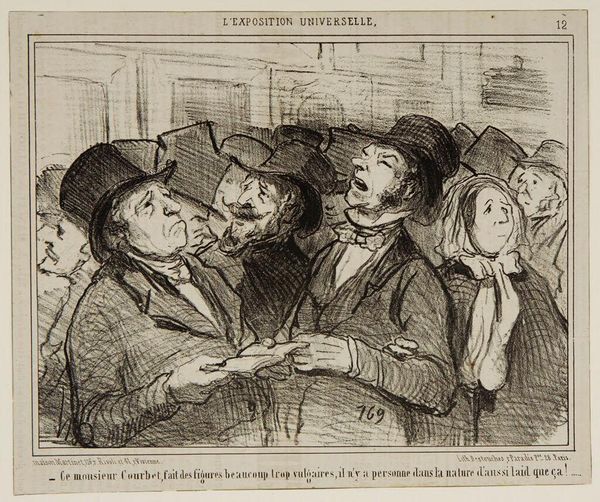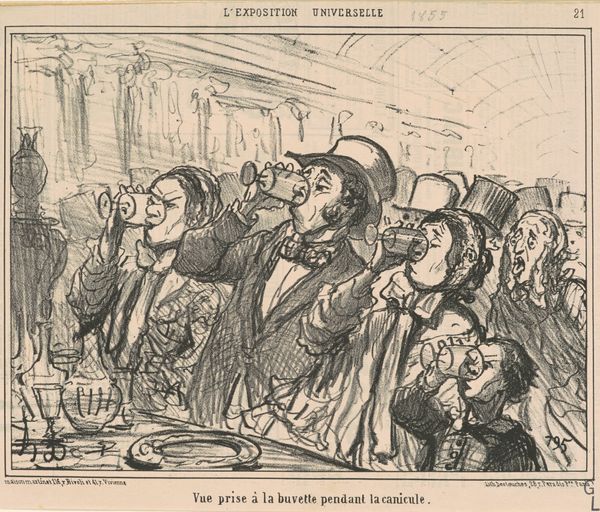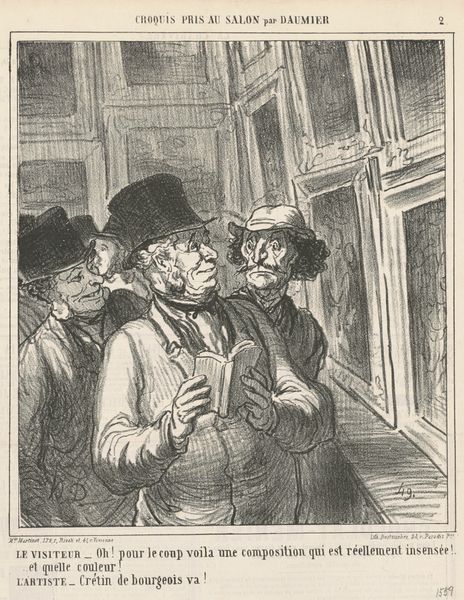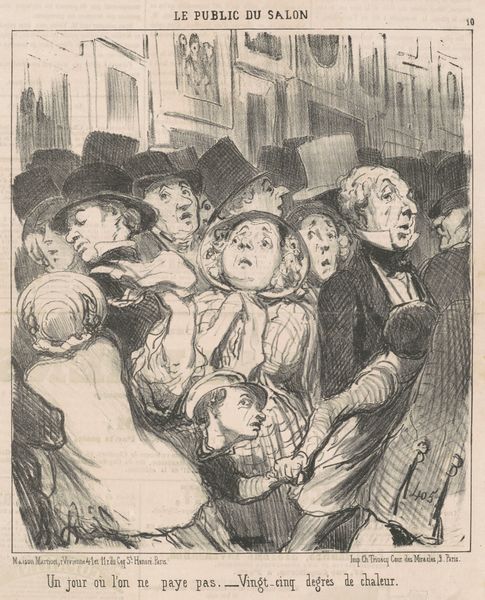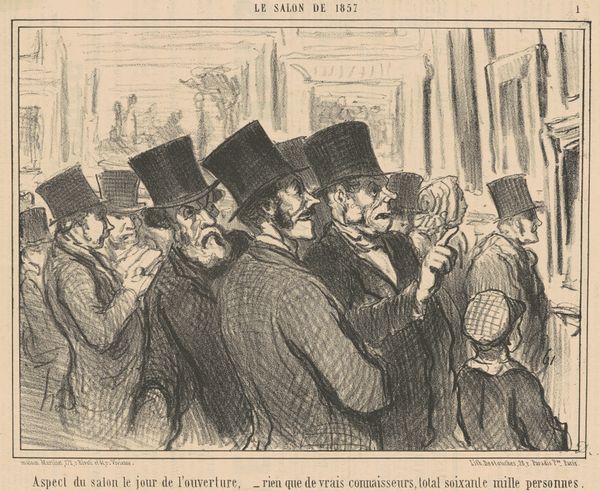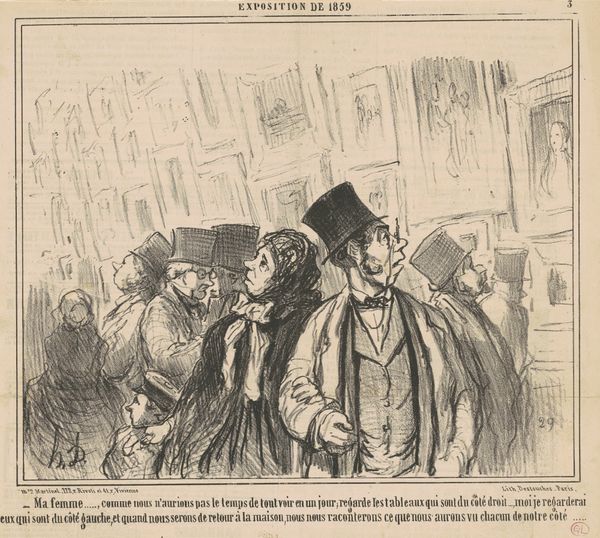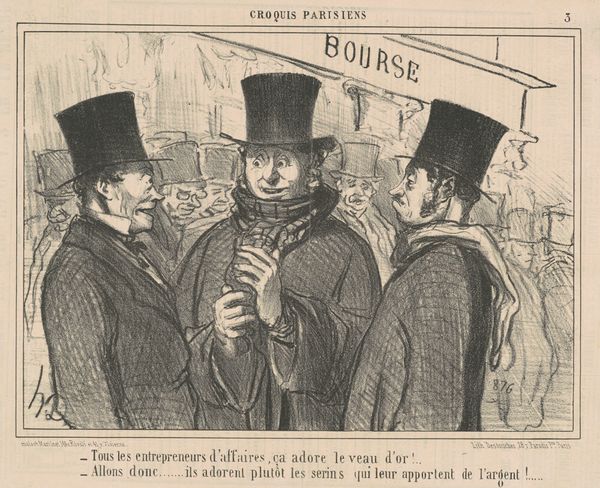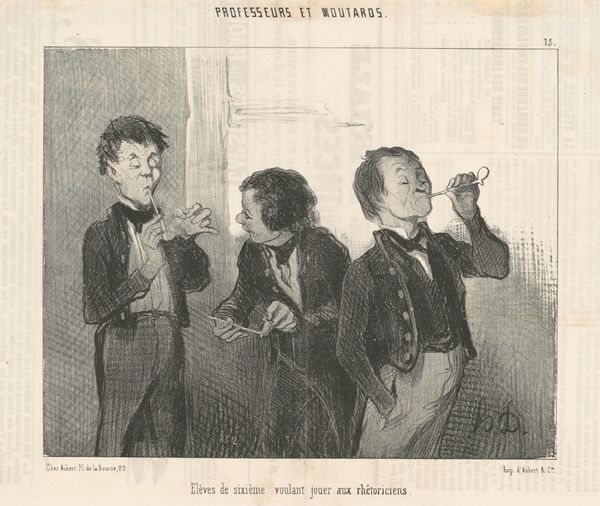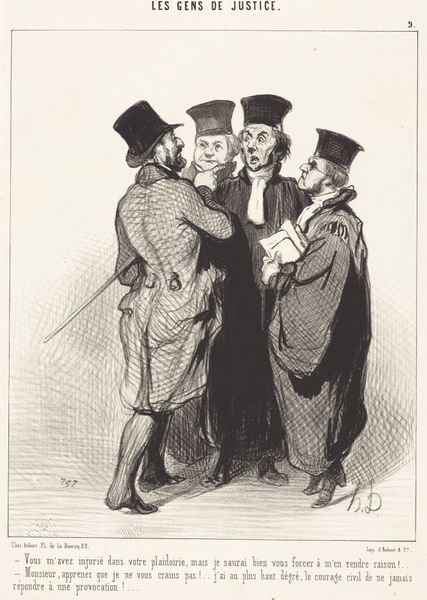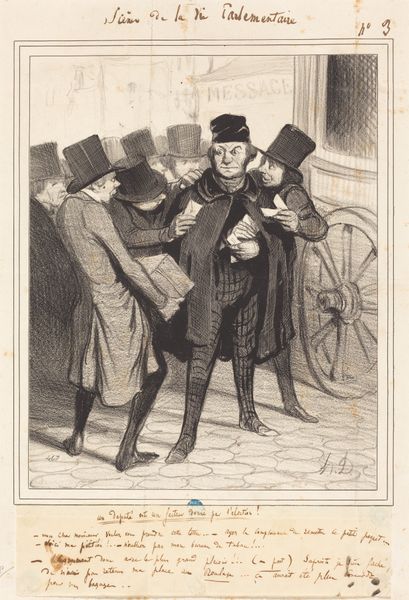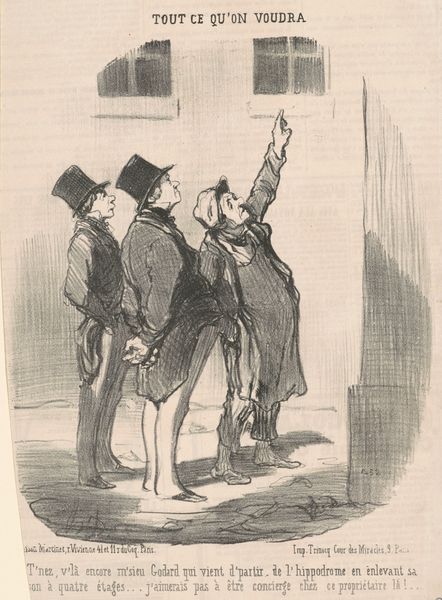
graphic-art, lithograph, print
#
graphic-art
#
lithograph
# print
#
caricature
#
genre-painting
#
realism
Copyright: National Gallery of Art: CC0 1.0
Curator: "Ce monsieur Courbet...", a lithograph print by Honoré Daumier, likely from the mid-19th century. It strikes me as quite satirical; the expressions are so exaggerated! How would you interpret this work in the context of its time? Editor: I see this as a biting commentary, particularly on class and artistic taste. Daumier was known for his social critiques, right? It feels like he’s lampooning the bourgeoisie’s reaction to Courbet’s Realism. What exactly was at stake, do you think, in their criticism? Curator: Absolutely. Remember that Courbet challenged the prevailing academic standards, depicting ordinary people and scenes with an unflinching realism that unsettled the establishment. The inscription translates to "This Monsieur Courbet makes figures that are much too vulgar; there is no one in nature as ugly as that!" which reveals the core conflict. Editor: So, it was about who had the power to define beauty and art? Curator: Precisely! Daumier is highlighting the hypocrisy and elitism inherent in these aesthetic judgements. Think about who is being centered and who is being marginalized by such claims. The supposed "ugliness" isn’t just about physical appearance, but a perceived transgression of social boundaries. This intersects with larger issues of representation and the politics of looking. Editor: That's a really interesting perspective, it hadn't occurred to me to interpret "ugliness" as social transgression rather than simply physical unattractiveness. The work encourages us to examine whose voices are amplified in the art world, and whose are actively suppressed. I learned a lot! Curator: Indeed! Considering how art shapes and is shaped by broader socio-political forces gives us powerful tools of interpretation. I appreciate how this image opened that reflection.
Comments
No comments
Be the first to comment and join the conversation on the ultimate creative platform.
